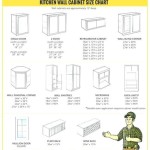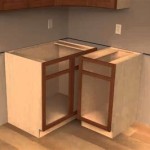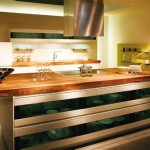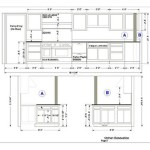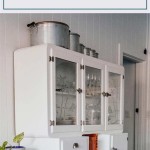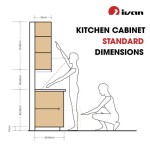Kitchen Cabinet Appraisal: Determining the True Value of Your Investment
Kitchen cabinets represent a significant financial investment in any home. They are not only functional storage solutions but also contribute significantly to the aesthetic appeal and overall value of the property. Understanding the factors that influence the appraisal of kitchen cabinets is crucial for homeowners looking to sell, refinance, or simply assess their home equity. This article will delve into the various aspects of kitchen cabinet appraisal, providing insights into the methods and considerations used to determine their worth.
The appraisal process for kitchen cabinets is not as straightforward as simply looking at the purchase price. Depreciation, wear and tear, style trends, and the overall condition of the cabinets all play a role in determining their current market value. Furthermore, the appraisal must consider the quality of materials used, the craftsmanship involved in their construction, and the presence of any unique or custom features. A comprehensive assessment will provide a realistic valuation that reflects the cabinets' contribution to the property's worth.
Key Point 1: Factors Influencing Kitchen Cabinet Value
Several factors contribute to the overall value of kitchen cabinets. These factors can be broadly categorized into material quality, construction methods, condition, style, and functionality. A thorough appraisal will consider each of these elements to arrive at a fair and accurate valuation.
The material used in the construction of the cabinets is a primary determinant of value. Solid hardwood cabinets, such as those made from oak, maple, or cherry, generally command a higher price than those made from plywood, particleboard, or MDF (Medium-Density Fiberboard). Hardwood cabinets are more durable, resistant to moisture damage, and tend to have a longer lifespan. Their aesthetic appeal also contributes to their higher appraised value. The type of wood used also influences the value, with rarer or more aesthetically pleasing wood species adding to the overall worth.
Construction methods are also critical. Cabinets constructed with dovetail joints, solid wood frames, and high-quality hardware are generally considered to be of higher quality and will be appraised accordingly. The precision and care taken during the construction process can significantly impact the cabinet's longevity and overall performance. Mass-produced cabinets often lack the attention to detail and robust construction found in custom or semi-custom options, influencing their appraisal.
The condition of the cabinets is perhaps the most immediate factor influencing its appraised value. Visible signs of wear and tear, such as scratches, dents, water damage, or peeling veneer, will detract from the cabinet's value. Regular maintenance, such as cleaning and touch-up repairs, can help preserve the cabinet's condition and maintain its value over time. Cabinets that have been well-maintained and are in good working order will generally receive a higher appraisal.
Style trends play a significant role in determining the market value of kitchen cabinets. Outdated styles or finishes can negatively impact their value, even if the cabinets are in good condition. Conversely, cabinets that feature current design trends, such as shaker-style doors, painted finishes, or modern hardware, are likely to be more appealing to potential buyers and will be appraised at a higher value. The influence of style trends is constantly evolving, and appraisers must stay updated on current preferences to accurately assess the impact of style on cabinet value.
Functionality is another essential factor. Cabinets that offer practical storage solutions, such as pull-out shelves, soft-close hinges, and efficient organization systems, are more desirable and thereby have a higher appraised value. The functionality of the cabinet is closely tied to its design. A well-designed cabinet maximizes storage space and improves the overall user experience. Poorly designed cabinets, even if made with high-quality materials, will not be appraised as highly as those that prioritize functionality.
Key Point 2: Appraisal Methods and Techniques
Appraising kitchen cabinets involves a combination of observation, measurement, knowledge of construction techniques, and an understanding of current market conditions. While there isn't a single, universally accepted method, appraisers typically employ a combination of approaches to arrive at a fair valuation.
The cost approach involves estimating the replacement cost of the cabinets, taking into account depreciation for wear and tear and obsolescence. This method considers the cost of materials, labor, and installation required to replace the existing cabinets with new ones of similar quality. The appraiser will assess the quality of the existing cabinets and compare them to available options in the market. Depreciation is then estimated based on the age, condition, and remaining useful life of the cabinets.
The comparative sales approach relies on comparing the subject property with similar properties that have recently sold. This method involves analyzing the prices of homes with comparable kitchen cabinets and adjusting for any differences in features, condition, or location. The appraiser will need to gather data on recent sales of comparable properties and carefully analyze the details of each sale to determine the appropriate adjustments. This approach is particularly useful when there are numerous recent sales of similar properties.
The income capitalization approach is less commonly used for kitchen cabinet appraisals, as it is primarily focused on income-producing properties. However, in some cases, the income-generating potential of a property may be influenced by the quality and appeal of its kitchen, making this approach relevant. This method involves estimating the net operating income generated by the property and dividing it by a capitalization rate to arrive at the property's value. The contribution of the kitchen cabinets to the overall income potential is considered in this calculation.
Physical inspection is also vital in the appraisal process. A thorough physical inspection involves examining the cabinets for any signs of damage, wear and tear, or structural issues. The appraiser will also assess the quality of the materials and construction methods used. The inspection will include opening and closing doors and drawers to assess their functionality, checking for loose hinges or damaged hardware, and inspecting the interior of the cabinets for signs of water damage or mold growth.
Market research also forms an essential part of the appraisal process. Appraisers must stay informed about current market trends, including popular styles, finishes, and materials. They also need to be aware of local market conditions, such as supply and demand for homes with updated kitchens. This research helps the appraiser to accurately assess the market value of the kitchen cabinets and to provide a realistic valuation.
Key Point 3: Factors That Can Increase or Decrease Value
Several factors can significantly influence the appraised value of kitchen cabinets, either positively or negatively. Understanding these factors can help homeowners make informed decisions about renovations and maintenance.
Customization is a significant value-adder. Custom-built cabinets designed to fit the specific dimensions of the kitchen and tailored to the homeowner's needs and preferences can significantly increase the overall value. Custom cabinets often feature unique design elements, high-quality materials, and superior craftsmanship. However, it's crucial to ensure that the custom design aligns with current market trends and appeals to a broad range of potential buyers. Highly personalized or eccentric designs may not be as appealing and could potentially detract from the value.
High-end appliances integrated seamlessly with the cabinets can also increase value. Built-in refrigerators, dishwashers, and ovens that match the style and finish of the cabinets create a cohesive and upscale look. High-end appliances not only enhance the functionality of the kitchen but also contribute to its overall aesthetic appeal. The brand and quality of the appliances are also important considerations. Premium brands known for their durability and performance will generally add more value than lower-end options.
Upgraded hardware and organizational features, such as soft-close doors and drawers, pull-out shelves, and built-in organizers, can also boost the appraised cost. These features improve the functionality and convenience of the cabinets, making them more desirable to potential buyers. Upgraded hardware can also enhance the aesthetic appeal of the cabinets, especially if it complements the overall design style. The functionality of modern kitchens is highly prized, and features that improve organization and accessibility are particularly valuable.
Poor maintenance and neglect are detrimental. Peeling paint, water damage, broken hinges, and other signs of disrepair will significantly decrease the value of the cabinets. Regular cleaning and maintenance are essential to preserve the condition of the cabinets and prevent costly repairs. Addressing any issues promptly can help to maintain their value over time. Neglecting maintenance can lead to more significant problems, such as structural damage or mold growth, which can be expensive to repair and significantly reduce the value.
Outdated styles and finishes can negatively impact the value of kitchen cabinets. Cabinets with outdated styles or finishes may be less appealing to potential buyers, even if they are in good condition. Updating the cabinets with a fresh coat of paint, new hardware, or refinishing can help to modernize their look and increase their value. While complete replacement is an option, updating existing cabinets can be a cost-effective way to improve their appearance and appeal. The choice between updating and replacing depends on the condition of the cabinets and the desired level of renovation.
DIY renovations that are poorly executed can substantially reduce cabinet value. While DIY projects can be a cost-effective way to update kitchen cabinets, it's crucial to ensure that the work is done professionally. Poorly executed paint jobs, uneven surfaces, or misaligned doors and drawers can detract from the value of the cabinets. If you are not confident in your ability to perform the renovation to a high standard, it's best to hire a professional contractor. A professionally executed renovation will not only improve the appearance of the cabinets but also increase their value.

The Impact Of Cabinet Design On Your Home S Re Value

The Dos And Don Ts Of Home Appraisal

Maximum Home Value Kitchen Projects Cabinets And Hardware

How Much Value Does A Kitchen Remodel Add To Your Home Homeserve Usa

Home Improvements What Counts Towards The Appraisal Padove Service

Kitchen Cabinet Value

Selecting Kitchen Cabinets Piscitello S

Kitchen Remodeling Tips Piscitello S

How Much Does A Kitchen Remodel Increase Home Value

5 Reasons To Choose Wood Kitchen Cabinets Cabinet Value
Related Posts

